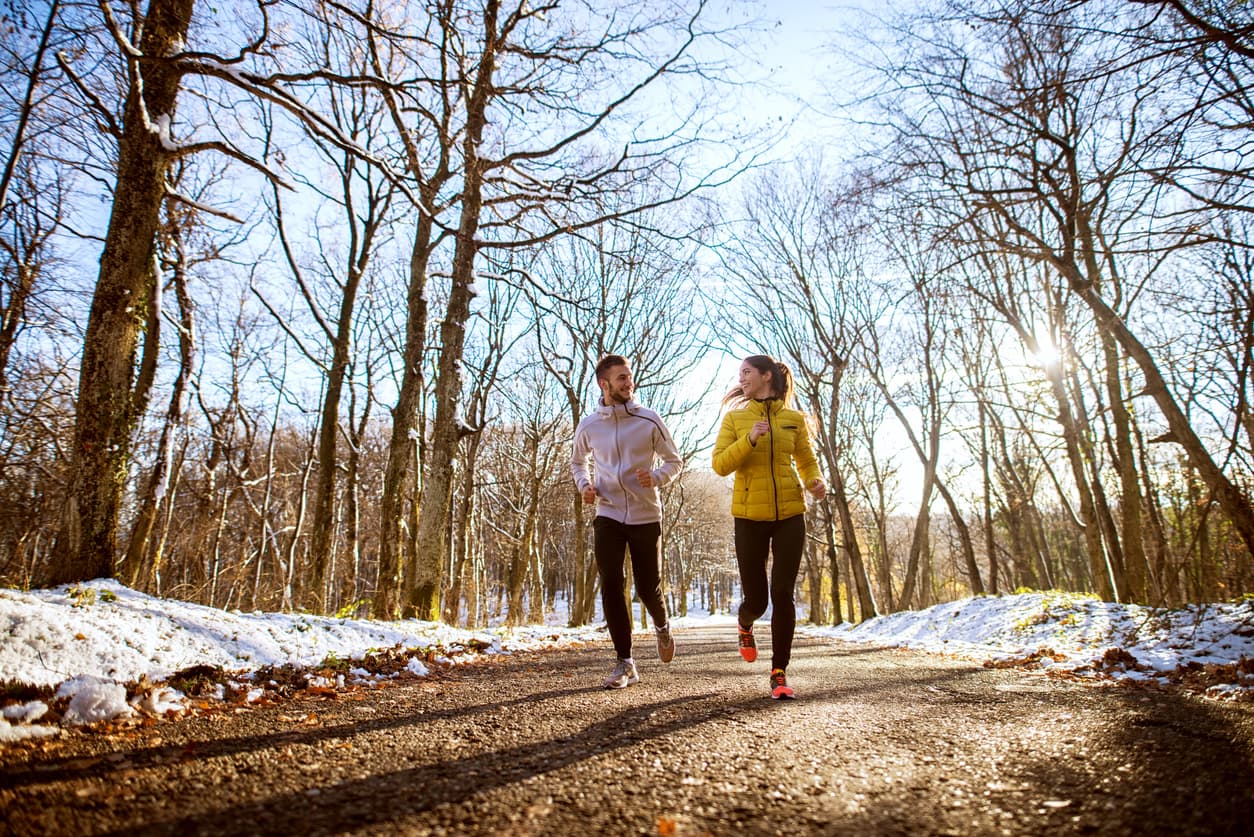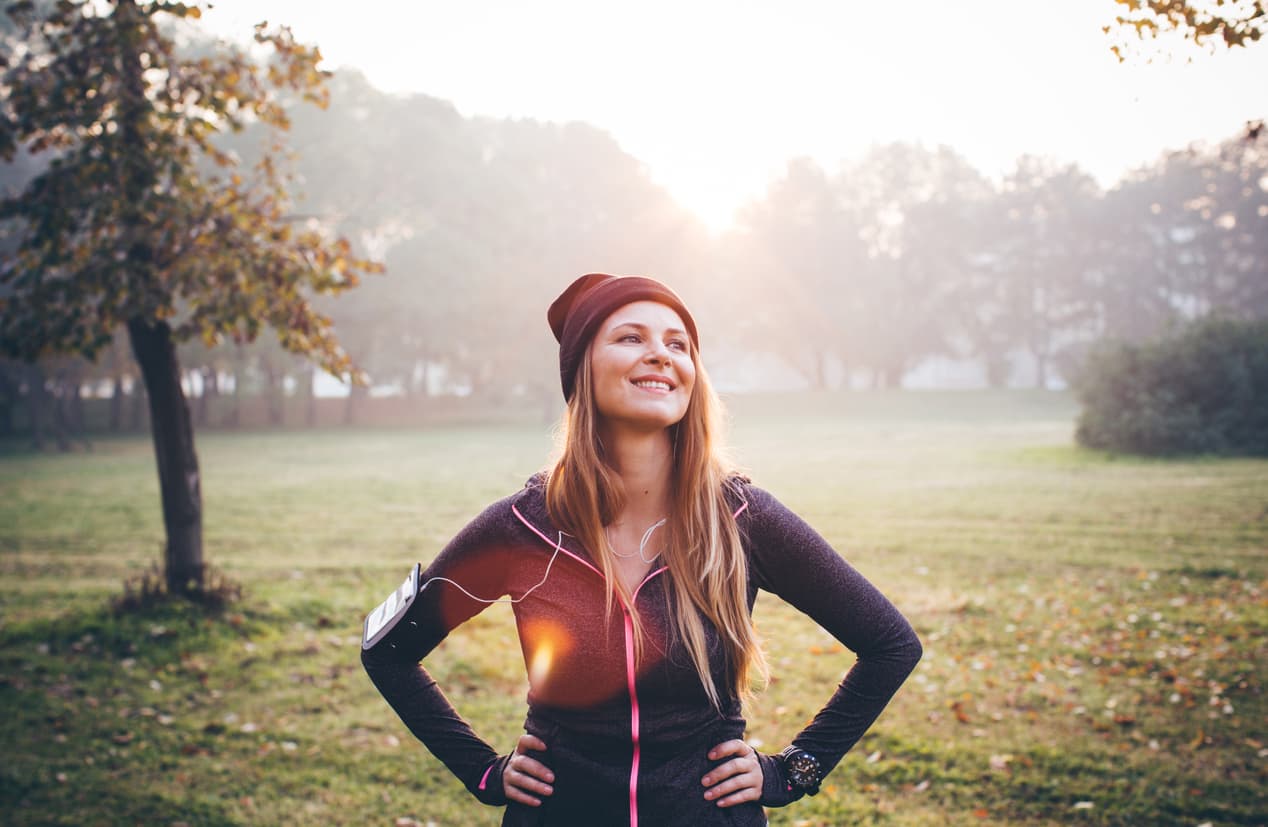Simple Ways to Keep Fit This Winter
Dark evenings, rain, cold weather… it can be enough to make anyone skip their workout in favour of the couch. But the winter weather needn’t signal the end of your exercise routine. Keeping active during the winter months will not only keep you in shape, it will have a positive impact on your mental health too. We spoke to Mia Khan, Nutrition and Exercise Coach, and Kirstin Finkbeiner, Health Coach with Zevo Health, to find out more.
How Can You Stay Motivated in the Winter Months?

Even with the best of intentions, it can be tough to stick to a new workout. Keep your motivation up with the following tips:
- Work out with a friend or colleague: It will boost motivation and you’re more likely to stick to the workout plan so you don’t let the other person down.
- Be Practical: Make sure you choose a routine that fits into your daily schedule – it will make it easier to stick it out.
- Do something you love: Whether it’s a dance class or joining a Five a Side team, choosing something you enjoy will make it much easier to stick to.
What Are Some Simple Ways to Build Exercise into Your Day?
No time for the gym? Don’t worry, there are simple ways you can build exercise into your day-to-day life. Give one of these a try:
- Walk, run or cycle to work
- Get off public transport a few stops early and walk the rest of the way
- Use the stairs as much as possible
- Be mindful of your posture when you’re at your desk
- Try a walking or standing meeting
How Can Exercise in Winter Boost Your Mental Health?
Exercising outdoors can impact our mood in a big way, even in winter. Although it might sound more appealing to stay inside where it’s warm, exposing your body to temperature changes – specifically the cold – can shock your system in a good way and help bring fresh energy into a dull exercise routine. For instance, running outside in the winter now becomes a mindful sensory experience where you are very aware of how your body feels. At the same time, you are connecting to the sounds of birds around you or smelling the crisp winter air.
Outdoor exercise can even help to combat SAD (seasonal affective disorder/seasonal depression), especially during your lunch break, as we are exposing our bodies to natural sunlight and Vitamin D during the day hours, boosting the body’s resources to fight low energy and low mood.
What to Wear for Winter Exercise?

Anyone who’s attempted a run outdoors in the depths of winter will know how difficult it can be to figure out what to wear. You leave the house freezing, but then overheat after that first kilometre. To combat this it’s best to wear three layers of light, breathable clothing:
- A base layer of breathable synthetic fabric to draw the sweat away from your body.
- A second layer like a fleece to keep you warm and remove any moisture from the base layer.
- A third, outer layer like a light, weather-resistant jacket that will protect from wind and rain.
Throw on a pair of gloves, a hat or a headband and a pair of running leggings and you’re good to go!
How Can You Stay Safe When Exercising During Winter?
Exercising in winter is perfectly safe, just take a few added precautions - particularly when running.
- Be aware of wet and slippery surfaces - choose footwear with good grip.
- As the days are getting shorter, make sure to wear clothing that is visible in the dark, and avoid going to places in the dark where you don’t feel safe.
- Ensure to warm up properly if you are running in cold conditions - easing yourself into the run is a good way of warming up.
- Gradually increase your speed for the first 8-10 minutes until you reach the speed you want to exercise at.
- Stretching and cool-down can be done inside to avoid getting too cold.
Created October 2019.